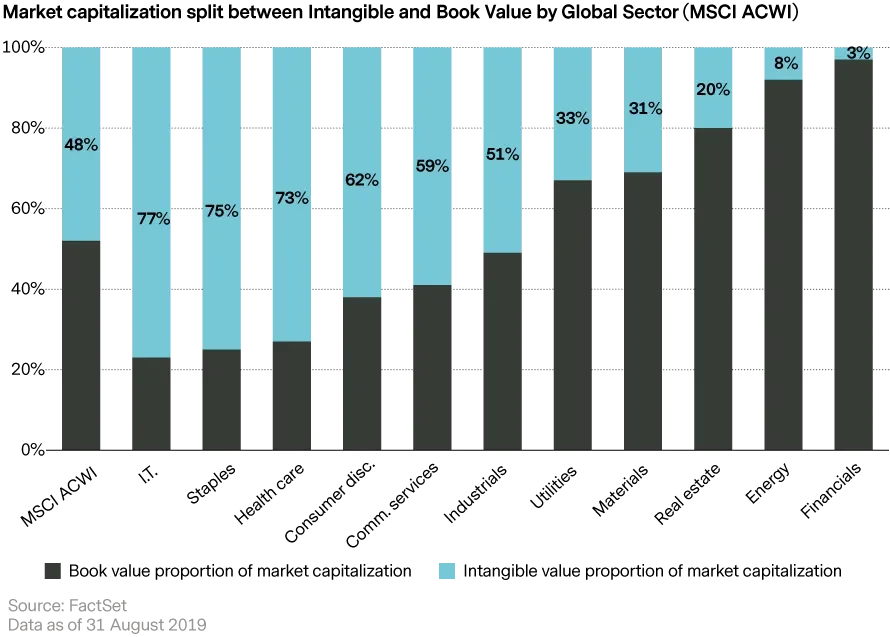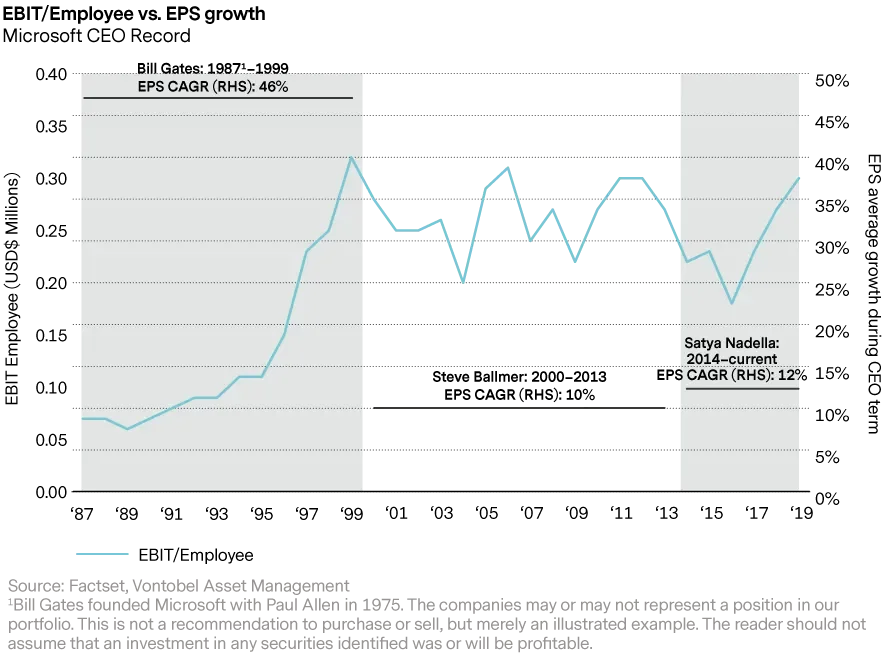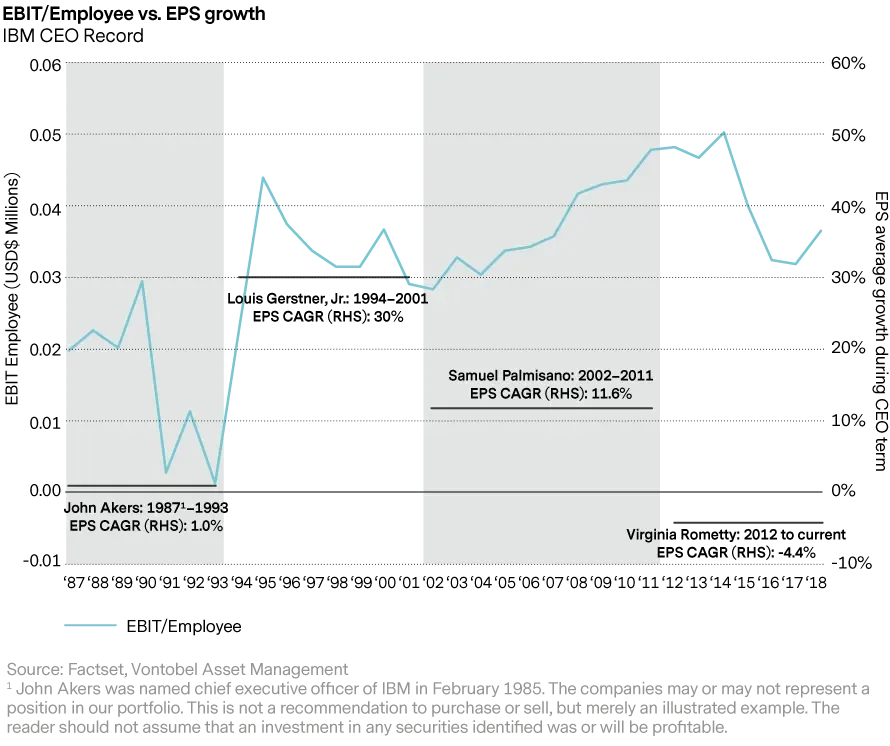ESG – Getting people right delivers results
Quality Growth Boutique
How much of your brain capacity are you utilizing – annually? A CEO could tell you what their plants are running at. Economists guestimate it for the whole economy. But most of us have no clue how efficiently our brains are running because we have no framework to measure it. Now extrapolate that for a company – what proportion of a company’s employee thought capacity is being used and what’s being frittered away? The leverage from this is significant for companies, and much greater still across an economy.
Employees are the consumers that power the economy and they represent a large part of the value in companies across the globe. Paying close attention to how well these valuable resources are managed is of great importance to a healthy long-term balance between stakeholders.
The problem is that investors know little about this mysterious “human capital” resource. There is next to no information published by listed companies. Many indicators of long-term franchise sustainability, or lack of, are projected by the company’s workforce. It is hard to track if a management team is on the right track without insight into human capital. Valuation from employees’ future work accounts for significant value – not just in industries like software and pharma, but in traditional ones too like autos, which have become rolling tech platforms. Brands also hold value, but the services and products under the brand umbrellas continually need to evolve and deliver.
To estimate the “intangible” value of a company – largely accounted for by stored knowledge, such as software, or professional services – we look at the difference between the stock market value and book value (mainly tangible assets like buildings and inventories + cash – money owed). For the S&P 500, book value is worth just 30% of its market capitalization1. A full 70% of the benchmark’s value is basically built on knowledge. For the global benchmark MSCI All Country World Index (ACWI), book value accounts for a higher 52% of market cap as it contains less IT exposure and more financials than the S&P 500.

The ability to leverage human capital ranges by industry. There is less value to add in competitive commoditized businesses such as supermarkets, retail banking and telecoms in many developed markets. However, continually adding value to products, such as branded consumer goods or IT services, can create the opportunity to grow by leveraging and building out specialized human capital across large platforms. The chart below shows intangible value per employee alongside workforce sizes for the MSCI ACWI constituents. Some businesses have grown to several hundred thousand employees, each one adding value to the business on average, creating a good job, and delivering products customers choose to buy.

A key goal of management is to maximize the utility of its work force. Employee capacity varies by education, guidance and opportunity. Utilizing that capacity is largely driven by motivation, which in turn is influenced by the company culture. There have been thousands of academic studies covering the impact of employee satisfaction on productivity. These include a broad study by James Harter et al2, published in 2002, that looked at 7,939 business units across 36 companies and found a number of important relationships between employee satisfaction and outcomes, including customer loyalty, productivity, profitability and turnover. That’s not surprising, but at least it’s not a debated issue.
Knowledge management
Knowledge management has been a “subject” since the early ‘90s and focuses on maximizing the benefits of knowledge within an organization. A simple way of looking at knowledge from a business context is in three layers.
- Employee ability (the sparkplug) – experts are central to the creative process of developing new products and services, and training new employees and future experts. They also feed knowledge flow businesses, such as advertising or asset management, where the product constantly needs to adapt. Better managed businesses tend to find it easier to hire and retain the most able employees.
- Stored knowledge (the engine) – the recording of previously established data and knowledge, such as patents, manufacturing process manuals or software.
- Living brand (performance) – interaction with customers and the reputation of the company.
All matter, but without employee ability the other two generally decay with time. Leadership and culture are the nourishment a company needs for effective hiring and retention.
Leadership and culture
Culture is central to managing people.
Having worked with managers from many companies, and watched the results over the years, there is little doubt that to fire up capable teams, they need to be educated, empowered, encouraged and above all motivated by a purpose. This contrasts with the old school industrial and bureaucratic approach of training, targets and supervision – it lacks trust. It is also notable how the same businesses under different leaders can get starkly different results from their teams.
The two charts below contrast two large and profitable technology companies – Microsoft and IBM. They outline the direction of earnings (EBIT) per employee under different CEOs alongside the average EPS compound growth during those CEOs’ tenure.
When Steve Ballmer took over from Bill Gates as Microsoft CEO in 2000 he held ground on existing products, but without an effective product vision, the company struggled. He passed the baton on to Satya Nadella in 2014, who has dramatically relaunched the company’s direction.
IBM also has a mixed track record under different leaders. Under Samuel Palmisano, the company’s earnings grew quickly, but he left the business without a set of future products to excite the market. Virginia Rometty took over in 2012 and having spent a lot of effort on A.I., has yet to show meaningful results. Morale after a year of cost-cutting appears challenged. In a fast-moving business like IT, leadership vision, and ability to inspire team confidence in that vision, is of fundamental importance.


What can be done better?
One area screaming for improvement is more disclosures on human capital. The lack of data may be in part due to the difficulty in valuing intangibles that do not trade, but there is a lot of useful information that could be shared. As it is, there is little discussion amongst analysts, or on updates from management teams, about the condition of the people resource.
Simple insights, such as turnover, average tenures of employees or notable departures in particular locations, are not required disclosures. If investors cannot obtain data from the published accounts or management on request, they need to carry out much more involved investigative research looking for indications. But this is not a viable market approach for basic data on important information. Better data will bring deeper insights on whether management is getting it right.
We feel fundamental investors should look for conviction in the reason underlying the potential of a business. Other investors may be satisfied with the published results. But relying on the derivative, removing the humans from the equation, can miss potentially very valuable information.
1 Source Factset, as of 31 August 2019
2 https://www.factorhappiness.at/downloads/quellen/s17_harter.pdf





